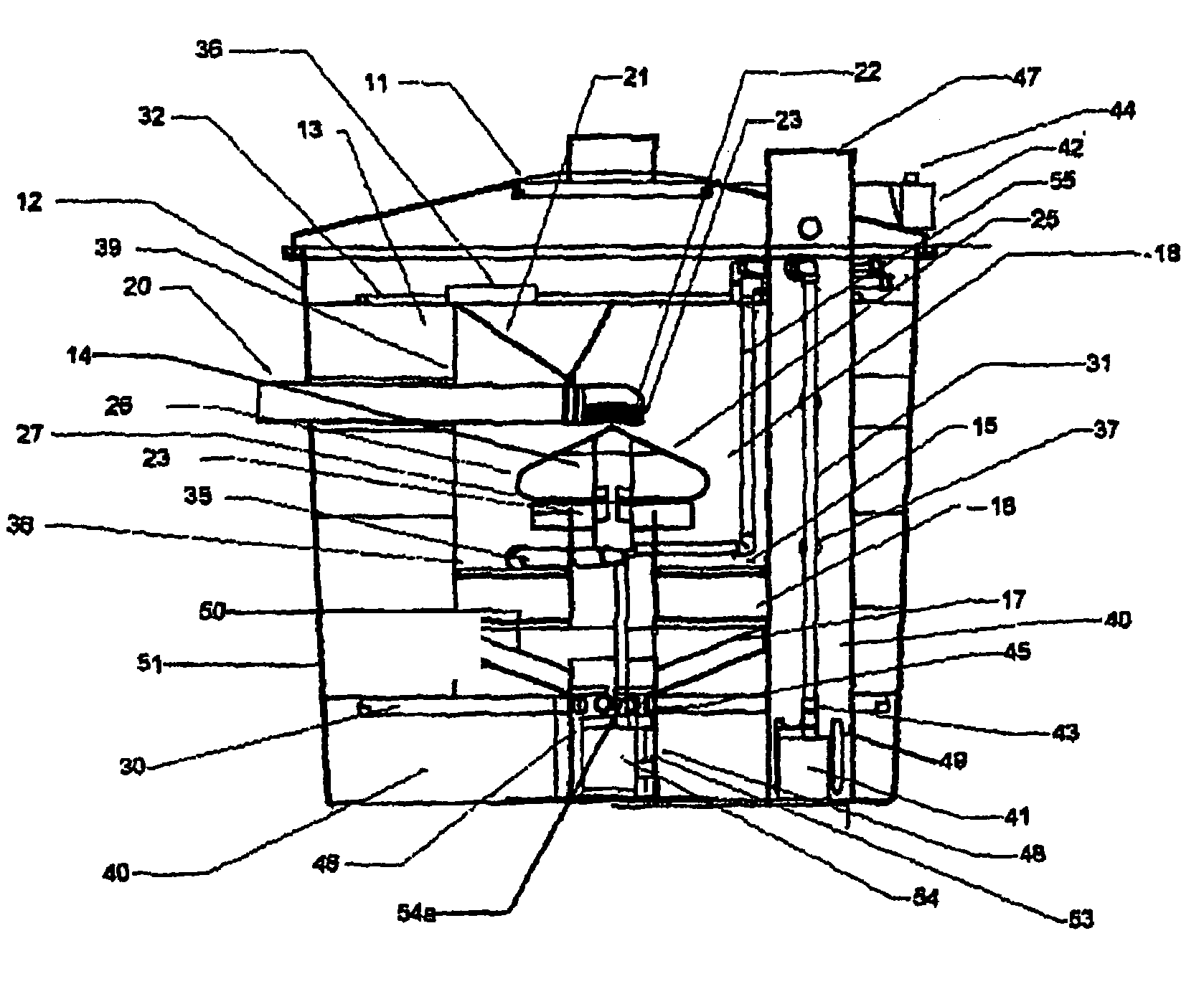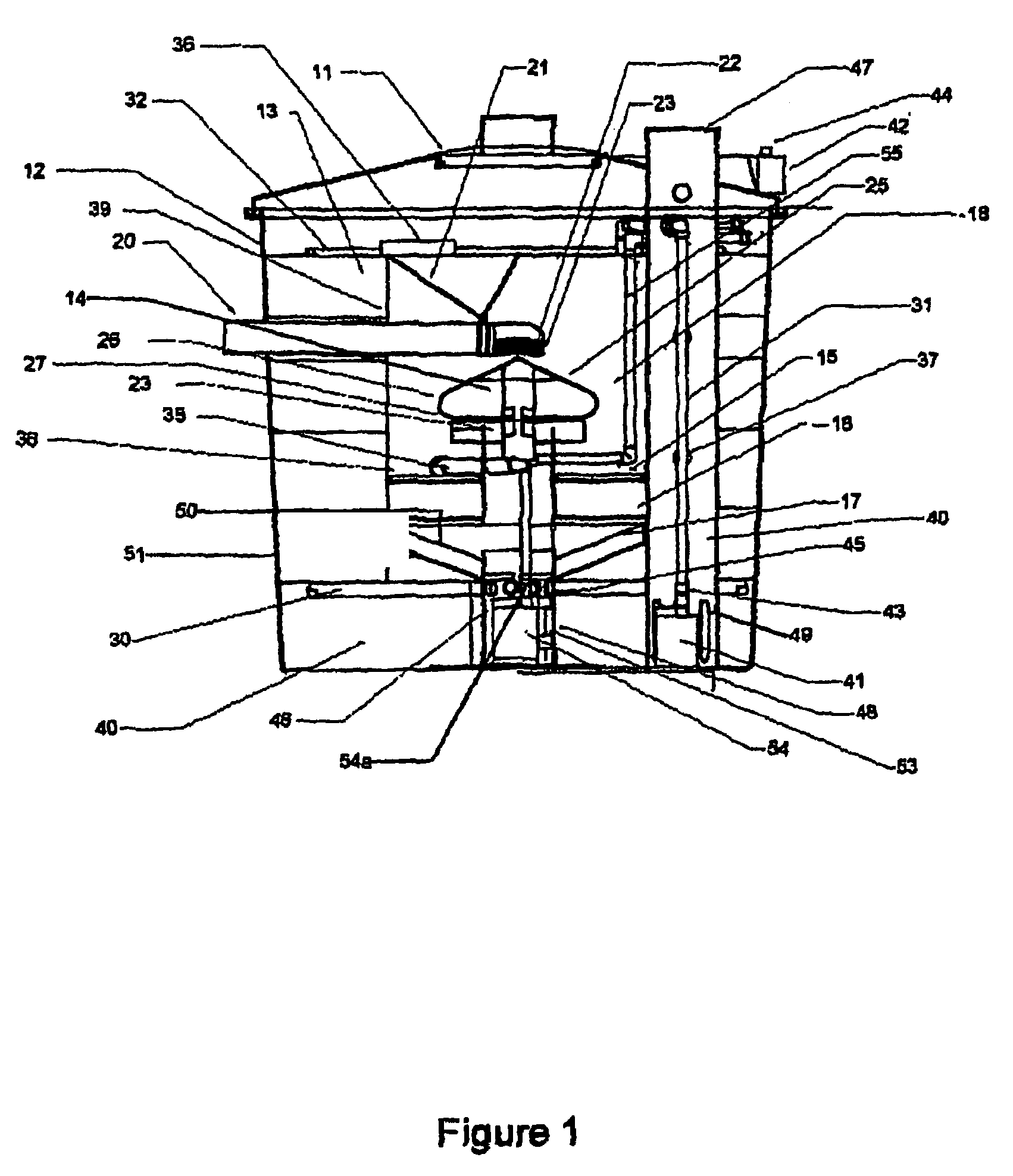Apparatus and method for the treatment of waste
a technology for a waste and an apparatus, applied in the direction of biochemistry apparatus, grading, filtration separation, etc., can solve the problems of affecting the health of the inhabitants, the management and treatment of domestic sewerage and other waste is a growing problem, and the lack of appropriate sewerage facilities, so as to reduce the size of the particles
- Summary
- Abstract
- Description
- Claims
- Application Information
AI Technical Summary
Benefits of technology
Problems solved by technology
Method used
Image
Examples
first preferred embodiment
[0088]With reference to FIGS. 1 to 5 there is shown a waste treatment apparatus 11. The waste treatment apparatus 11 has an outer housing 12 that surrounds a substantially ring shaped trickle bed 13, a centrally located separating cone 14, two solids decomposition trays 15 and 16 located below the separating cone 14 and a substantially concave screen 17.
[0089]Waste is introduced into housing 12 through waste inlet pipe 20 which is positioned by supports 21 so that the opening 22 is above the separating cone 14.
[0090]The opening 22 has a baffle 23 that directs waste towards the apex of the cone 14.
[0091]The cone 14 is non-porous and shaped so that waste runs downwardly from the apex along inclined surface 25. The inclined surface 25 has an approximate 25 degree angle with respect to the horizontal axis. The cone diameter in the preferred embodiment is 560 mm while the radius of the lower curved surface is 46 mm.
[0092]From the inclined surface 25 a major portion of the liquid waste mo...
second preferred embodiment
[0107]With reference to FIGS. 9 to 11, there is shown a waste treatment apparatus 110 which can be installed either above or below ground level. The apparatus 110 is aerated through a number of vents 135.
[0108]The apparatus 110 consists of a first treatment chamber 111. Liquid and solid waste enters the chamber 111 through waste pipe 112. The outlet of the pipe 112 is positioned above a separation cone 113. The end of the pipe 112 has a flexible geotextile skirt 114 which serves to dampen the rush of the waste stream onto the cone 113.
[0109]The cone 113 is formed from a porous woven mesh membrane that allows at least a proportion of the liquid in the waste stream to pass through. The cone 113 allows about 95% of the liquid in the waste stream to separate from the solid waste.
[0110]The liquid from the cone 113 collects in a tray 115 and then drains through two exit pipes 116 arranged 180° apart into respective funnels 117. The liquid is then distributed by pipe 118 into a series of l...
PUM
| Property | Measurement | Unit |
|---|---|---|
| angle | aaaaa | aaaaa |
| angle | aaaaa | aaaaa |
| angle | aaaaa | aaaaa |
Abstract
Description
Claims
Application Information
 Login to View More
Login to View More - R&D
- Intellectual Property
- Life Sciences
- Materials
- Tech Scout
- Unparalleled Data Quality
- Higher Quality Content
- 60% Fewer Hallucinations
Browse by: Latest US Patents, China's latest patents, Technical Efficacy Thesaurus, Application Domain, Technology Topic, Popular Technical Reports.
© 2025 PatSnap. All rights reserved.Legal|Privacy policy|Modern Slavery Act Transparency Statement|Sitemap|About US| Contact US: help@patsnap.com



